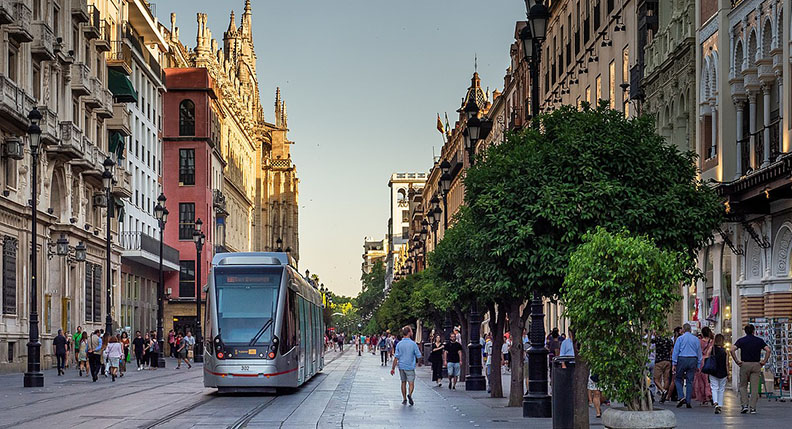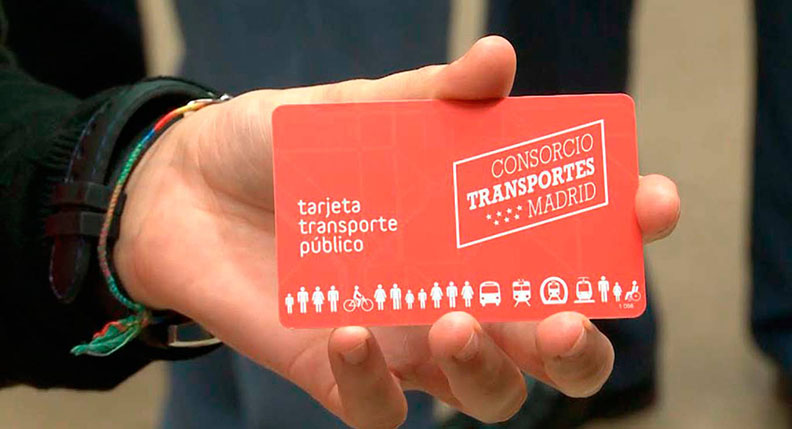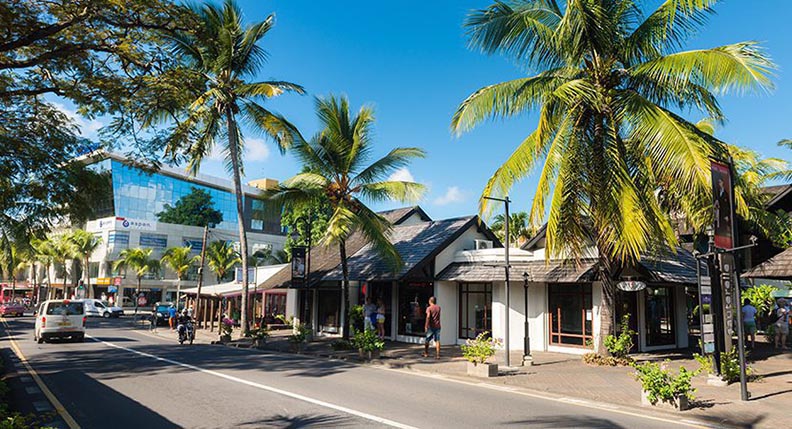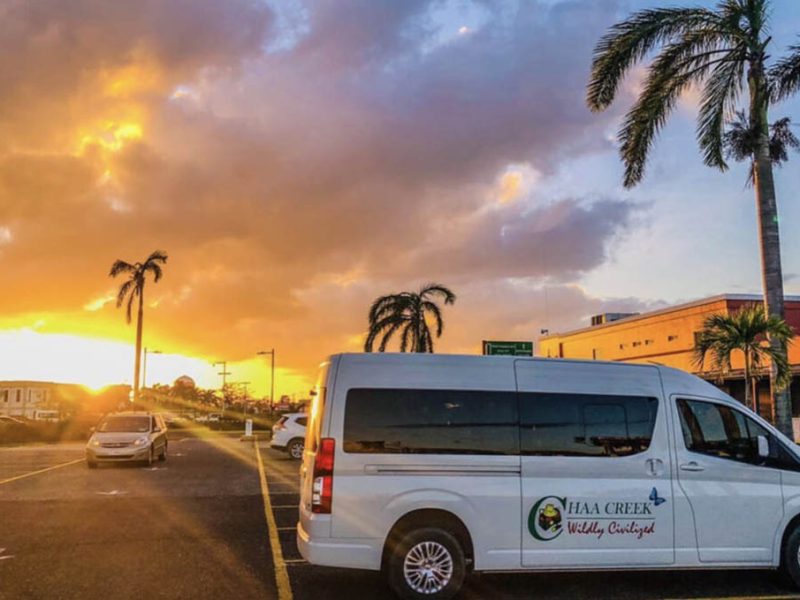Andalusia, the captivating southern region of Spain, beckons with its rich cultural heritage, deep historical roots, and unique charm. Among its many treasures, Seville stands out as the heart of Andalusia, offering a wealth of experiences from historic palaces to modern transportation conveniences. In this comprehensive guide, we’ll dive into Seville’s transportation options, tips for getting around, and how to make your journey as smooth as possible.
1. Seville’s Metro System
The Convenience of a Single Metro Line
Seville, the vibrant capital of Andalusia, is renowned for its rich history, stunning architecture, and warm Mediterranean climate. While the city’s transportation network is multifaceted, its metro system—though limited to just one line—plays a crucial role in connecting various parts of the city. This guide will delve into the specifics of Seville’s metro system, exploring its layout, functionality, and how it can enhance your travel experience.
Overview of Seville’s Metro System
Seville’s metro system, officially known as Metro de Sevilla, consists of a single line, Line 1, which is pivotal to the city’s public transportation infrastructure. This line, inaugurated in 2009, runs in a semicircular route, linking the southern suburbs with the city center, and serves as a vital link between commercial, residential, and historical areas.
Key Features of Line 1:
- Length and Coverage: Line 1 spans approximately 18 kilometers (11 miles) from the northern terminus at Montequinto to the southern terminus at Ciudad Expo. This route covers several key neighborhoods and connects major commercial and residential areas.
- Stations: The metro line has 22 stations, including central stops like Puerta Jerez and Prado de San Sebastián. Each station is strategically placed to provide easy access to various parts of the city.
- Frequency: Trains run frequently, with intervals of about 7-10 minutes during peak hours and slightly longer during off-peak times. The system is designed to ensure minimal waiting times and reliable service.
- Operating Hours: The metro operates daily from 6:30 AM to 11:00 PM, with extended hours on weekends and public holidays.
Practical Use During the Summer
During my summer visit to Seville, I found the metro system to be an indispensable part of my travel experience, especially given the sweltering heat typical of the region. Here’s how the metro system proved to be a lifesaver:
Air-Conditioned Comfort: Seville’s summer temperatures can soar well above 35°C (95°F). The metro’s air-conditioned trains offer a refreshing escape from the heat, making your journey comfortable even on the hottest days. The cool environment inside the trains provides a stark contrast to the sweltering heat outside, allowing you to travel with ease.
Ease of Navigation: Despite having only one line, the simplicity of Seville’s metro system is advantageous for visitors. The single line minimizes the complexity of navigating the system, making it straightforward to understand and use. With clear signage and easy-to-read maps at each station, finding your way around the city is simple.
Accessibility to Key Attractions: The metro line efficiently connects several of Seville’s key attractions and business districts. For instance:
- Puerta Jerez Station: Located near the historic center, this station provides easy access to landmarks such as the Seville Cathedral and the Alcázar.
- Prado de San Sebastián Station: This station is close to the Plaza de España and the María Luisa Park, making it convenient for visitors exploring these iconic sites.
Reliability and Frequency: The metro’s reliable service and frequent trains mean that you can travel between different areas of the city quickly and with minimal delays. Whether you’re heading to a historical site, a shopping area, or a local neighborhood, the metro ensures that you reach your destination efficiently.
Practical Tips for Using the Metro
Ticket Options:
- Single Tickets: Ideal for occasional travelers, single tickets are valid for a one-way journey and can be purchased at ticket machines or kiosks located at each station.
- Multiviaje Card: For those planning to use the metro frequently, the Multiviaje card offers a cost-effective solution. This card provides multiple trips at a discounted rate and can be recharged as needed.
- Bonometro Ticket: Another convenient option is the Bonometro ticket, which offers a set number of journeys at a reduced price. This ticket is perfect for tourists who want the flexibility to travel multiple times during their stay.
Purchasing Tickets: Tickets can be purchased from automated vending machines, which are available in all metro stations. These machines accept cash and card payments. Additionally, tickets and cards can also be bought at various kiosks and newsstands around the city.
Travel Etiquette:
- Quiet Zones: While the metro is generally quiet, it’s courteous to keep conversations at a low volume and avoid making loud noises.
- Priority Seating: Respect priority seating areas designated for elderly passengers, pregnant women, and those with disabilities.
Seville’s metro system, with its single yet efficient Line 1, is an essential component of the city’s public transportation network. During my summer visit, the air-conditioned trains and straightforward navigation made exploring Seville’s vibrant neighborhoods and historic sites comfortable and enjoyable. Whether you’re a tourist or a local, the metro offers a reliable and pleasant way to traverse the city’s key areas, enhancing your overall travel experience in this enchanting Andalusian capital.
For additional information and to plan your journeys, you can visit the official Metro de Sevilla website or consult local transportation guides. Enjoy your travels and the cool respite that Seville’s metro provides!

2. Seville’s Tram System (MetroCentro)
Another Way to Explore the City
In addition to the metro, Seville boasts a tram line known as MetroCentro. This tram line serves the city center, passing through popular spots like the Plaza de España and commercial districts. The MetroCentro is ideal for leisurely sightseeing, offering a different perspective of the city compared to the metro.
I recall taking the MetroCentro one bright morning, starting from the Plaza de España and enjoying the city’s scenic beauty along the way. The spacious and comfortable tram provided a pleasant way to explore Seville’s historic and modern landmarks. On sunny days, riding the tram allows you to soak in the city’s unique atmosphere while navigating through its vibrant streets.
3. Seville’s Bus Network – TUSSAM
A Comprehensive Bus System
TUSSAM (Transporte Urbano de Sevilla) operates Seville’s public bus network, covering both the city and its outskirts. Whether you’re heading to the Doñana National Park to the south or exploring major attractions in the city center, TUSSAM’s buses provide a reliable and extensive service.
During a trip to Seville, I relied on the TUSSAM buses to reach various destinations. My route took me from the city center to southern residential areas, passing through interesting neighborhoods. The bus system’s punctuality and cleanliness were impressive, and during peak hours, frequent service reduced wait times, making it easy to get around.
4. Seville’s Love for Cycling
Enjoying the City on Two Wheels
Seville is renowned for its excellent cycling infrastructure and friendly biking environment. The city features numerous bike rental stations, allowing visitors to easily rent a bike and explore along well-maintained bike paths. Cycling is not only a healthy way to travel but also offers a unique perspective on the city.
I once rented a bike in Seville and cycled through various city corners. From charming old quarters to modern commercial areas, biking allowed me to delve deeper into the city’s character. I pedaled past major sights like the Royal Alcázar and the Cathedral, feeling immersed in the heart of Seville.
5. Choosing the Right Transport Ticket or Pass
Tarjeta Multiviaje Card
To facilitate travel within Seville, various transport tickets and passes are available. The Tarjeta Multiviaje card is a highly practical option. This card is usable across the metro, buses, and trams, making it ideal for visitors who need frequent access to public transportation. You can purchase the card at major transport hubs and convenience stores, and it can be recharged as needed.

Bonometro Ticket
In addition to the Tarjeta Multiviaje, the Bonometro ticket is another common choice. This ticket is specifically for the metro system and can be purchased for single rides or multiple uses. It offers a cost-effective option for those primarily traveling by metro.
Selecting the Right Ticket
Choosing the appropriate ticket or pass based on your travel plans is essential. For those frequently using public transport, the Tarjeta Multiviaje card provides convenience and value. Conversely, if you mainly use the metro, the Bonometro ticket offers excellent value for money.
6. The Convenience of Seville’s Public Transportation
Smooth Travel Experience
Overall, Seville’s public transport system is exceptionally convenient. The metro, tram, and bus services provide numerous options for getting around the city. The comprehensive network ensures easy access to major attractions and neighborhoods. Utilizing public transportation not only saves time but also enhances your travel experience.
Getting to and from Seville Airport and Train Station
If you’re arriving in Seville by plane or train, the city’s public transport can also simplify your journey. Seville’s airport is connected to the city center by a direct airport bus (Line EA), with a journey time of approximately 30 minutes. You can find the bus stop in the airport’s arrival hall for easy access.
For train travelers, the Santa Justa train station is well-connected to the city center via TUSSAM buses and the metro. The metro line from the train station quickly takes you to central areas, making your arrival and departure smooth and hassle-free.
Exploring the enchanting cities of Andalusia, Seville undoubtedly stands out as a must-visit destination. Understanding and utilizing the local transportation options will make your trip more enjoyable and hassle-free. Whether you choose to ride the metro, tram, or bus, or opt for cycling, Seville offers a variety of ways to experience its charm. By selecting the right transport tickets or passes and taking advantage of the city’s efficient public transport system, you can ensure a seamless and delightful visit to this captivating city. I hope these tips help you plan your Seville adventure and make the most of your time in this remarkable city.



